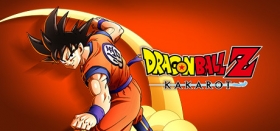
Dragon Ball Z: Kakarot Review
While the wildly popular Dragon Ball series has had a constant influx of games based off it, it’s been a while since fans have last seen a title that retells the Dragon Ball Z story without deviation. Despite having an obvious admiration for the source material, being chock full of references and nods to the Dragon Ball universe, Dragon Ball Z: Kakarot shows that passion alone isn’t another to deliver a wholly satisfying adaptation.
From the opening cinematic being set to the iconic “Cha-la Head Cha-la” tune, it’s obvious that Kakarot’s main demographic is those who grew up with – or are at least familiar with – the original anime/manga, and the game doesn’t shy away from pandering to that nostalgia.

Recognisable moments and characters aren’t just prevalent throughout the main story beats: side missions usually involve classic characters, and even certain main missions aren’t afraid to have a bit of fun with fan favourite scenarios, such as Goku and Piccolo being forced to earn driving licences.
The palpable charm of the Dragon Ball universe is undeniable throughout Kakarot, but beyond the initial flood of nostalgia the experience as a whole is quite shallow. While it can be a nice surprise to see some more obscure characters such as Android 8 or Nam being quest-givers, the objectives often boil down to simple fetch-quests where you’ll gather resources from designated locations, beat up a few enemies, or both. There can be some witty and humorous dialogue, but that doesn’t prevent the act of questing from feeling like an XP grind above all else.
Combat doesn’t fare much better either. Fights take place in a 3D arena, and you’re given a few basic options: a one-button melee combo, KI blasts, quick dashing manoeuvres, and super attacks. If this sounds relatively bare bones, that’s because it is. There’s very little depth and complexity to it, making the already simplistic Dragon Ball Xenoverse games feel competent by comparison.

While it does slightly improve as the game continues – with more super attacks and longer combos being available throughout the course of the game – most fights blend together and feel indistinguishable regardless of whether you’re two hours or 20 hours deep. Larger boss fights against key characters such as Frieza and Cell offer a few unique gimmicks to keep you on your toes, but for the majority of the time combat feels extremely one-note.
Thankfully there is a strong sense of progression throughout the game, as you’ll constantly be unlocking new moves and abilities, or new characters to play as. While the game is called Kakarot, you’ll find yourself spending a lot of time playing as characters other than Goku and experiencing the story through their eyes.
Viewing the story from all of these different angles definitely makes it a more comprehensive retelling than most, but it can also lead to an overabundance of cutscenes that can feel frustrating for those who are already intimately familiar with the story as a whole. This is especially true with the varying quality of cutscenes; sometimes the game can look downright gorgeous in its cinematics, while other times characters will just be standing still with almost no expressions or emotional tension.

The strongest of Kakarot’s ideas is the surprisingly flexible Community Board system. The Community Board has numerous different boards revolving around character traits, such as Cooking or Training Proficiency. Upon completing certain missions, players will unlock Spirit Emblems that can be placed onto these different boards to gain certain bonuses. For example, putting more characters into the Cooking board could provide extended bonuses from eating meals in the game, while adding more to the Z Warrior board could lead to additional HP for each character.
What’s more, certain Spirit Emblems will gain bonuses when placed next to each other, adding another layer of planning when it comes to each emblem’s placement. While the bonuses won’t completely alter playstyles – like with different classes in more traditional RPG’s – but it does add some choice and variation as to how a player may prefer to approach the game as a whole.

The charming spirit of the original series may be prevalent throughout this retelling, but ultimately it feels like a shallow package. Kakarot may do a better job of showcasing its admiration for the source material than most other videogame adaptations of popular anime and manga, but it doesn’t change the fact that it’s just not particularly interesting to play through. There’s certainly some enjoyment for fans to latch onto, but it’s hard to say if that’s enough when the game feels skin-deep in its appeal.
DRAGON BALL Z: KAKAROT (Reviewed on PlayStation 4)
The game is average, with an even mix of positives and negatives.
It’s just not particularly interesting to play through. There’s certainly some enjoyment for fans to latch onto, but it’s hard to say if that’s enough when the game feels skin-deep in its appeal.











COMMENTS
Acelister - 10:40am, 1st February 2020
It's less than 9000!